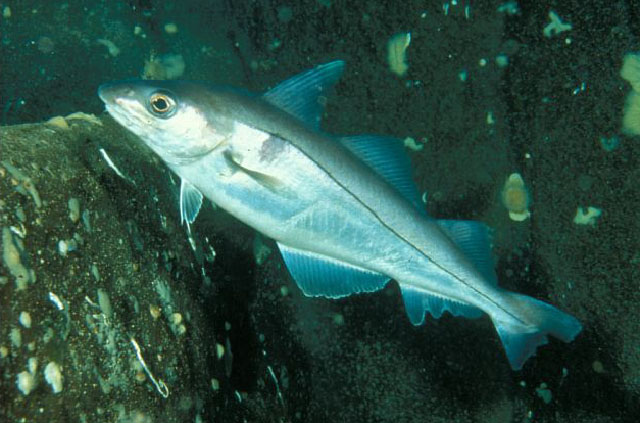| Gadidae (Cods and haddocks) |
| 112 cm TL (male/unsexed); max.weight: 17 kg; max. reported age: 20 years |
|
demersal; marine; depth range 10 - 450 m, oceanodromous |
| Northeast Atlantic: Bay of Biscay to Spitzbergen; in the Barents Sea to Novaya Zemlya; around Iceland; rare at the southern Greenland. Northwest Atlantic: Cape May, New Jersey to the Strait of Belle Isle. |
|
Dorsal spines (total): 0-0; Anal spines: 0-0. Mouth relatively small; lower jaw shorter than the upper jaw; chin barbel rather small. Lateral line dark, uninterrupted to about the end of the body. Lateral-line pores present on head. Scales overlapping. A large dark blotch is above the pectoral fin just below the lateral line. |
| Adults are found more commonly from 80 to 200 m, over rock, sand, gravel or shells, usually at temperatures between 4° and 10°C. Feed mainly on small bottom-living organisms including crustaceans, mollusks, echinoderms, worms and fishes (sand lance, capelin, silver hake, American eels, herring and argentines) (Ref. 5951). A batch spawner (Ref. 51846). Undertakes extensive migrations in the Barents Sea and Iceland. Sold fresh, chilled as fillets, frozen, smoked and canned. Also utilized for fish meal and animal feeds. Can be steamed, fried, broiled, boiled, microwaved and baked (Ref. 9988). |
|
Vulnerable (VU); Date assessed: 01 August 1996 (A1d+2d) Ref. (130435)
|
| harmless |
Source and more info: www.fishbase.org. For personal, classroom, and other internal use only. Not for publication.

